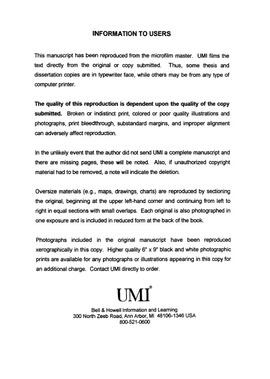| dc.contributor.advisor | Gates, Edward, | en_US |
| dc.contributor.advisor | Magrath, Jane, | en_US |
| dc.contributor.author | Wheeler, Dale John. | en_US |
| dc.date.accessioned | 2013-08-16T12:30:43Z | |
| dc.date.available | 2013-08-16T12:30:43Z | |
| dc.date.issued | 1999 | en_US |
| dc.identifier.uri | https://hdl.handle.net/11244/5864 | |
| dc.description.abstract | The main body of the document consists of five chapters, each devoted to a particular facet of Liszt's Roman solo piano music: Original Works, Transcriptions of Keyboard Works, Transcriptions of Orchestral and Chamber Works, Transcriptions of Choral Works, and Transcriptions of Operatic Works. In total, forty-seven compositions (or groups of compositions, as the case may be) are examined. Numerous musical examples and charts are used to illustrate important points. | en_US |
| dc.description.abstract | The Conclusion affirms the importance of Liszt's Roman period as a strategic component of his compositional evolution. As such, the piano works form a critical link between the vivid soundscapes of Liszt's middle years and the forward-looking experiments of his old age. | en_US |
| dc.description.abstract | An introductory chapter presents a brief overview and outlines the purpose, need, and limitations and procedures of the study. Included also is a survey of related literature. Chapter 2 seeks to establish an historical backdrop against which to evaluate Liszt's musical activities during his tenure in Rome. Liszt's relationships with Princess Carolyne von Sayn-Wittgenstein, Wagner, and the Vatican form an important aspect of this assessment. | en_US |
| dc.description.abstract | Although it has been more than a century since the death of Franz Liszt, important aspects of his compositional output remain largely unexplored. The primary aim of this study is to present an overview of Liszt's solo piano music written (or completed) in Rome between 1862 and 1868. The target works are approached not only as individual entities but as integral elements of a sweeping tapestry. While a portion of the discussion describes the noteworthy features of each piece, the broader intent is to underscore historical and stylistic interrelationships between works and between groups of works. Ultimately, the paper seeks to clarify the position of the Roman repertoire relative to Liszt's overall creative activity. It is hoped that the results of this investigation will benefit pianists and music lovers, whether amateur or professional, and will stimulate further interest in Liszt's compositional efforts from this important period of his life. | en_US |
| dc.description.abstract | Finally, a Selected Bibliography groups important resources according to topic. Two charts summarizing Liszt's Roman works and a Discography are included as appendices. | en_US |
| dc.format.extent | xix, 372 leaves : | en_US |
| dc.subject | Piano music Analysis, appreciation. | en_US |
| dc.subject | Education, Music. | en_US |
| dc.subject | Fine Arts. | en_US |
| dc.subject | Liszt, Franz, 1811-1886 Piano musix Criticism and interpretation. | en_US |
| dc.subject | Music. | en_US |
| dc.title | Franz Liszt's solo piano music from his Roman period, 1862-1868. | en_US |
| dc.type | Thesis | en_US |
| dc.thesis.degree | D.M.A. | en_US |
| dc.thesis.degreeDiscipline | School of Music | en_US |
| dc.note | Source: Dissertation Abstracts International, Volume: 60-08, Section: A, page: 2734. | en_US |
| dc.note | Co-Major Professors: Edward Gates; Jane Magrath. | en_US |
| ou.identifier | (UMI)AAI9941855 | en_US |
| ou.group | Weitzenhoffer Family College of Fine Arts::School of Music | |
